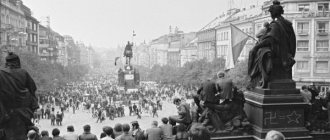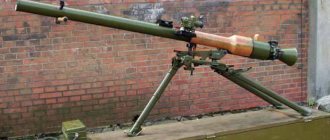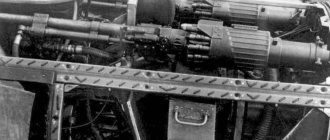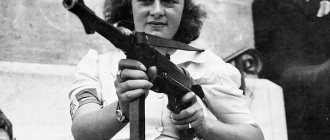GULAG (1930–1960) – the Main Directorate of Corrective Labor Camps, based in the NKVD system. It is considered a symbol of lawlessness, slave labor and arbitrariness of the Soviet state during Stalinism. Nowadays, you can learn a lot about the Gulag if you visit the Gulag History Museum.
The Soviet prison camp system began to be formed almost immediately after the revolution. From the very beginning of the formation of this system, its peculiarity was that there were certain places of detention for criminals, and others for political opponents of Bolshevism. A system of so-called “political isolators” was created, as well as the SLON Directorate (Solovetsky Special Purpose Camps) formed in the 1920s.
In the context of industrialization and collectivization, the level of repression in the country increased sharply. There was a need to increase the number of prisoners to attract their labor on industrial construction sites, as well as to populate almost deserted, not very economically developed regions of the USSR. After the adoption of the resolution regulating the work of “prisoners,” the United State Political Administration began to contain all convicts with sentences of 3 years or more in its GULAG system.
It was decided to create all new camps only in remote uninhabited areas. In the camps they were engaged in the exploitation of natural resources using the labor of convicts. The released prisoners were not released, but were assigned to the territories adjacent to the camps. The transfer “to free settlements” of those who deserved it was organized. “Convicts” who were evicted outside the inhabited area were divided into especially dangerous (all political prisoners) and low-danger. At the same time, there were savings on security (escapes in those places were less of a threat than in the center of the country). In addition, reserves of free labor were created.
The total number of prisoners in the Gulag grew rapidly. In 1929 there were about 23 thousand, a year later - 95 thousand, a year later - 155 thousand people, in 1934 there were already 510 thousand people, not counting those transported, and in 1938 over two million and this only officially.
Forest camps did not require large expenses for arrangement. However, what was going on in them is simply beyond any normal person’s head. You can learn a lot if you visit the Gulag History Museum, a lot from the words of surviving eyewitnesses, from books and documentaries or feature films. There is a lot of declassified information about this system, especially in the former Soviet republics, but in Russia there is still a lot of information about the Gulag classified as "secret".
A lot of material can be found in Alexander Solzhenitsyn’s most famous book “The Gulag Archipelago” or in the book “Gulag” by Dantzig Baldaev. For example, D. Baldaev received materials from one of the former guards, who served for a long time in the Gulag system. The Gulag system of that time still evokes nothing but amazement among reasonable people.
Women in the Gulag: to increase “mental pressure” they were interrogated naked
To extract the testimony necessary for investigators from those arrested, the GULAG “experts” had many “established” methods. So, for example, for those who did not want to “confess everything frankly”, before the investigation they were first “stuck in the corner.” This meant that people were placed facing the wall in an “at attention” position, in which there was no point of support. People were kept in such a rack around the clock, not allowed to eat, drink or sleep.
Those who lost consciousness from powerlessness continued to be beaten, doused with water and returned to their original places. With stronger and more “intractable” “enemies of the people,” in addition to the brutal beatings that were banal in the Gulag, they used much more sophisticated “interrogation methods.” Such “enemies of the people,” for example, were hung on a rack with weights or other weights tied to their legs.
For “psychological pressure”, women and girls often attended interrogations completely naked, being subjected to ridicule and insults. If they did not confess, they were raped “in unison” in the interrogator’s office.
The ingenuity and foresight of the Gulag “workers” was truly amazing. To ensure “anonymity” and to deprive convicts of the opportunity to evade blows, victims before interrogation were stuffed into narrow and long bags, which were tied and tipped to the floor. Following this, the people in the bags were beaten half to death with sticks and rawhide belts. This was called in their circles “slaughtering a pig in a poke.”
The practice of beating “family members of enemies of the people” was widely popular. For this purpose, testimonies were extracted from the fathers, husbands, sons or brothers of those arrested. In addition, they were often in the same room during the abuse of their relatives. This was done to “strengthen educational influences.”
Trapped in cramped cells, the convicts died standing
The most disgusting torture in the Gulag pre-trial detention centers was the use of so-called “sump tanks” and “glasses” on detainees. For this purpose, 40-45 people were crammed into ten square meters in a cramped cell, without windows or ventilation. After that, the chamber was tightly “sealed” for a day or more. Crammed into a stuffy cell, people had to endure incredible suffering. Many of them had to die, remaining in a standing position, supported by the living.
Of course, taking them to the toilet, when kept in “septic tanks”, was out of the question. That's why people had to send their natural needs right on the spot, to themselves. As a result, the “enemies of the people” had to stand and suffocate in conditions of a terrible stench, supporting the dead, who grinned their last “smile” right in the faces of the living.
Things were no better with the conditioning of prisoners in so-called “glasses.” “Glass” was the name for narrow, coffin-like iron cases or niches in the walls. The prisoners squeezed into the “glasses” could not sit down, much less lie down. Basically, the “glasses” were so narrow that it was impossible to move in them. Particularly “persistent” people were placed for a day or more in “glasses” in which normal people were unable to stand upright. Because of this, they were invariably in a crooked, half-bent position.
“Glass” with “settlers” were divided into “cold” (which were located in unheated rooms) and “hot”, on the walls of which heating radiators, stove chimneys, heating plant pipes, etc. were specially placed.
Agreement
about a charitable donation
(public offer)
Moscow April 1, 2022
The international public organization “International Historical, Educational, Charitable and Human Rights Society “Memorial”, represented by the Executive Director Zhemkova Elena Borisovna, acting on the basis of the Charter, hereinafter referred to as the “Beneficiary”, hereby offers individuals or their representatives, hereinafter referred to as the “Benefactor” ", collectively referred to as the "Parties", enter into a Charitable Donation Agreement on the following terms:
1. General provisions on the public offer
1.1. This proposal is a public offer in accordance with paragraph 2 of Article 437 of the Civil Code of the Russian Federation.
1.2. Acceptance of this offer is the transfer of funds by the Benefactor to the settlement account of the Beneficiary as a charitable donation for the statutory activities of the Beneficiary. Acceptance of this offer by the Benefactor means that the latter has read and agrees with all the terms of this Agreement on charitable donation with the Beneficiary.
1.3. The Offer comes into force on the day following the day of its publication on the official website of the Beneficiary www.memo.ru, hereinafter referred to as the “Site”.
1.4. The text of this offer may be changed by the Beneficiary without prior notice and is valid from the day following the day of its posting on the Site.
1.5. The Offer is valid until the day following the day the notice of cancellation of the Offer is posted on the Site. The Beneficiary has the right to cancel the Offer at any time without giving reasons.
1.6. The invalidity of one or more terms of the Offer does not entail the invalidity of all other terms of the Offer.
1.7. By accepting the terms of this agreement, the Benefactor confirms the voluntary and gratuitous nature of the donation.
2. Subject of the agreement
2.1. Under this agreement, the Benefactor, as a charitable donation, transfers his own funds to the Beneficiary’s current account, and the Beneficiary accepts the donation and uses it for statutory purposes.
2.2. The performance by the Philanthropist of actions under this agreement constitutes a donation in accordance with Article 582 of the Civil Code of the Russian Federation.
3.Activities of the Beneficiary
3.1. The purpose of the Beneficiary’s activities in accordance with the Charter is::
— assistance in building a developed civil society and a democratic state governed by the rule of law, excluding the possibility of a return to totalitarianism;
— formation of public consciousness based on the values of democracy and law, overcoming totalitarian stereotypes and asserting individual rights in political practice and public life;
— restoration of historical truth and perpetuation of the memory of victims of political repression of totalitarian regimes;
— identification, publication and critical understanding of information about human rights violations by totalitarian regimes in the past and the direct and indirect consequences of these violations in the present;
— promoting the full and transparent moral and legal rehabilitation of persons subjected to political repression, the adoption of government and other measures to compensate for the damage caused to them and provide them with the necessary social benefits.
3.2. The beneficiary in its activities does not have the goal of making a profit and directs all resources to achieve the statutory goals. The financial statements of the Beneficiary are audited annually. The beneficiary publishes information about its work, goals and objectives, activities and results on the website www.memo.ru and in other open sources.
4. Conclusion of an agreement
4.1. Only an individual has the right to accept the Offer and thereby conclude an Agreement with the Beneficiary.
4.2. The date of acceptance of the Offer and, accordingly, the date of conclusion of the Agreement is the date of crediting funds to the Beneficiary’s bank account. The place of conclusion of the Agreement is the city of Moscow of the Russian Federation. In accordance with paragraph 3 of Article 434 of the Civil Code of the Russian Federation, the Agreement is considered to be concluded in writing.
4.3. The terms of the Agreement are determined by the Offer as amended (including amendments and additions) valid on the day of execution of the payment order or the day of depositing cash into the Beneficiary's cash desk.
5. Making a donation
5.1. The Benefactor independently determines the amount of the charitable donation and transfers it to the Beneficiary using any payment method specified on the website www.memo.ru under the terms of this Agreement.
5.2. When transferring a donation by debiting from a bank account, the purpose of payment should indicate “Donation for statutory activities.”
6. Rights and obligations of the parties
6.1. The Beneficiary undertakes to use the funds received from the Benefactor under this agreement strictly in accordance with the current legislation of the Russian Federation and within the framework of statutory activities.
6.2. The Benefactor gives permission to process and store personal data used by the Beneficiary solely for the execution of the specified agreement.
6.3. The Beneficiary undertakes not to disclose the personal and contact information of the Benefactor to third parties without his written consent, except in cases where this information is required by government bodies that have the authority to require such information.
6.4. A donation received from the Benefactor, which, due to the closure of the need, is partially or completely unspent according to the purpose of the donation specified by the Benefactor in the payment order, is not returned to the Benefactor, but is redistributed by the Beneficiary independently to other relevant programs.
6.5. The Beneficiary has the right to notify the Benefactor about current programs using electronic, postal and SMS mailings, as well as telephone calls.
6.6. At the request of the Benefactor (in the form of an email or regular letter), the Beneficiary is obliged to provide the Benefactor with information about the donations made by the Benefactor.
6.7. The Beneficiary does not bear any other obligations to the Benefactor other than the obligations specified in this Agreement.
7.Other conditions
7.1. In the event of disputes and disagreements between the Parties under this agreement, they will, if possible, be resolved through negotiations. If it is impossible to resolve a dispute through negotiations, disputes and disagreements may be resolved in accordance with the current legislation of the Russian Federation in the courts at the location of the Beneficiary.
8. Details of the parties
BENEFICIARY:
International public organization “International Historical, Educational, Charitable and Human Rights Society “Memorial” INN: 7707085308 Checkpoint: 770701001 OGRN: 1027700433771 Address: 127051, Moscow, Maly Karetny Lane, 12, Email address: Bank details: International M memorial Current account: 40703810738040100872 Bank: PJSC SBERBANK, MOSCOW BIC: 044525225 Corr. account: 30101810400000000225
To “increase labor discipline,” the guards shot every convict at the rear of the line.
Due to a lack of barracks, arriving convicts were kept in deep pits at night. In the morning they climbed the stairs and began building new barracks for themselves. Considering the 40-50 degree frosts in the northern regions of the country, temporary “wolf pits” could be made into something like mass graves for newly arrived convicts.
The health of the prisoners tortured during the stages was not improved by the Gulag “jokes”, which the guards called “giving off steam”. To “pacify” the new arrival and who was outraged by the long wait in the local zone, the following “ritual” was performed before welcoming new recruits to the camp. At 30-40 degree frosts, they were suddenly doused with fire hoses, after which they were “kept” outside for another 4-6 hours.
They also “joked” with those who violated discipline during the work process. In the northern camps this was called “voting in the sun” or “drying paws.” The convicts, threatened with immediate execution if they “attempted to escape,” were ordered to stand in the bitter cold with their hands raised up. They stood like that throughout the working day. Sometimes those who “voted” were forced to stand with a “cross.” At the same time, they were forced to spread their arms to the sides, and even stand on one leg, like a “heron.”
Another striking example of sophisticated sadism, which not every Gulag history museum will honestly tell you about, is the existence of one brutal rule. It has already been mentioned and it reads like this: “without the last one.” It was introduced and recommended for execution in individual camps of the Stalinist Gulag.
Thus, in order to “reduce the number of prisoners” and “increase labor discipline,” the guards had an order to shoot all convicts who were the last to join the work brigades. The last prisoner who hesitated, in this case, was immediately shot while trying to escape, and the rest continued to “play” this deadly game with each new day.
The presence of “sexual” torture and murder in the Gulag
It is unlikely that women or girls, at different times and for various reasons, who ended up in camps as “enemies of the people,” could have imagined in their worst nightmares what awaited them. Having passed rounds of rape and shame during “interrogations with bias,” upon arriving at the camps, the most attractive of them were “distributed” among the command staff, while others were put to almost unlimited use by the guards and thieves.
During the transfer, young female convicts, mainly natives of the Western and newly annexed Baltic republics, were purposefully pushed into cars with inveterate lessons. There, throughout their long route, they were subjected to numerous sophisticated gang rapes. It got to the point that they did not live to reach their final destination.
“Putting” uncooperative prisoners into cells with thieves for a day or more was also practiced during “investigative actions” to “encourage those arrested to give truthful testimony.” In the women's zones, newly arrived prisoners of “tender” age were often made prey to masculine prisoners who had pronounced lesbian and other sexual deviations.
In order to “pacify” and “lead to proper fear” during transportation, on ships transporting women to the areas of Kolyma and other distant points of the Gulag, during transfers the convoy deliberately allowed the “mixing” of women with the urks traveling with the new “travel” to places "not so distant." After mass rapes and massacres, the corpses of women who did not survive all the horrors of the general transport were thrown overboard the ship. At the same time, they were written off as having died from disease or killed while trying to escape.
In some camps, “accidentally coincidental” general “washings” in the bathhouse were practiced as punishment. Several women washing in the bathhouse were suddenly attacked by a brutal detachment of 100-150 prisoners who burst into the bathhouse. They also practiced open “trade” in “living goods”. Women were sold for different “times of use.” After which the prisoners who had been “written off” in advance faced an inevitable and terrible death.
Photos of Gulag camps banned in the USSR
This topic was taboo for almost all the years of the existence of the USSR - in Stalin’s times they were silent about it. No one said that all the “successes” of the Stalinist economy were based on the slave forced labor of people whom the state sent to camps for decades for minor or even minor offenses.
If you look at the map of the shock new buildings of the first five-year plans, you will see that this map exactly coincides with the map of Stalin’s Gulag concentration camps. Of course, in the Soviet years they were silent about this - telling tales about “millions of Komsomol volunteers” who travel to distant northern places to die there with a pickaxe in their hands. Before 1956, for telling the truth about Stalin’s concentration camps one could be sent to that very camp, and after 1956 (when Stalin’s personality cult was debunked) this became an inconvenient truth that the Soviets tried their best to hide - but periodically here and there in the places of “Stalin’s five-year plans” “People find mountains of frozen skeletons with the remains of camp numbers on decayed padded jackets. No one really took these burials into account in those years, and no one is in a hurry to explore and take them into account now.
There are almost no photographs left of the Gulag concentration camps - only occasionally people with cameras managed to get there. Of course, they didn’t photograph the worst horror - photographing only what was allowed, but still - every such photograph is now worth its weight in gold. In today's post we will look at a selection of photographs of the Gulag that were banned in the USSR.
02. Gulag prisoners at the construction of the White Sea Canal. Photo from 1932. All Stalin’s “economic miracles” were made with the hardest manual labor of camp slaves - in legal terms, the USSR rolled back to the times of two thousand years ago - except that in the USSR the slaves were not captive barbarians, but their own citizens. 12,800 people died during the construction of the White Sea Canal ; unofficial sources cite much higher figures.
03. Work on the construction of the Transpolar Highway - another crazy project of the USSR, which has now become a ghost road - for every few kilometers there is one abandoned Stalinist concentration camp, and for every ten metros there is one corpse. The work was carried out without design and estimate documentation by 300,000 Gulag prisoners , tens of thousands of whom died - mainly at the so-called “Building 501” and “Building 503”. There is still no exact data about the dead people - in modern Russia this is of no interest to anyone, it is much more interesting to scold Pindos and bring flowers to Stalin’s monuments.
04. Winter work of prisoners:
05. Summer work of prisoners in quarries:
06. Prisoners during the construction of the Yun-Yaga mine, 1937.
07. Construction of one of the camp barracks. As a rule, the barracks were built by the prisoners themselves from wood, and the inside was practically no different from similar barracks in Nazi concentration camps like Sachsenhausen - inside there were the same long rows of wooden bunks, on which sometimes two or three people slept.
08. Inside one of the camp barracks. The Nazis wrote terrible and mocking inscriptions on the gates of their concentration camps : “Labor sets you free ,” and the Soviet Bolsheviks sculpted pennants near the prisoners’ bunks with the inscriptions “Work is a matter of honor, a matter of glory” - which can be read on the pennant closest to the shooting point.
09. However, the Bolsheviks also made inscriptions above the gates similar to the Nazi ones - in the photo below you can see the gates of the Vorkutlag with the inscription “Work in the USSR is a matter of honor, a matter of glory, a matter of valor and heroism!”
10. Another photo taken inside the camp barracks. On it you can see roughly hewn wooden bunks, on each bunk of which 2 or 3 people often slept. In winter, due to the cold, prisoners slept in the same clothes they worked in.
11. Camp formation. In the background you can see a tower on which a shooter with a PPSh, machine gun or machine gun usually sat guarding the local perimeter.
12. Also construction. The photo was taken from outside the perimeter, and in the frame you can see a mesh fence woven from barbed wire. There was so much barbed wire accumulated in the USSR that in 1986, after the Chernobyl accident, they were able to quickly and completely quickly and seamlessly fence off the perimeter of the Exclusion Zone, hundreds of kilometers long.
13. On the territory of the concentration camp. The stone building made of scarce brick to the right of the tower is most likely a punishment cell, into which particularly disobedient prisoners who did not want to put up with the concentration camp order were sent for water and 200-300 grams of bread per day. 1-2 weeks of life in a punishment cell guaranteed a serious illness like pneumonia, and a month guaranteed death.
14. Prisoners of Stalin’s concentration camps wore uniforms with numbers sewn on them - in the picture you can see a Vorkutlag prisoner with a number sewn on his cap, on his trousers and on his back. Most often, the number consisted of a letter and numbers - Solzhenitsyn’s famous story “One Day in the Life of Ivan Denisovich” was first called “Shch-854”, after the concentration camp number of the main character.
15. Another Vorkutlag prisoner, a man and a woman, with concentration camp numbers sewn on their clothes:
16. And this is a women’s barracks in one of Stalin’s Gulag concentration camps. As you know, women in the USSR had equal rights with men, and therefore they were also thrown into camps and forced to do the most difficult work.
17. Inside the women's barracks. In the center of the frame you can see a woman with the concentration camp number “Z-966” sewn on her hat.
18. Approximate composition of the work of female prisoners. Laying sleepers:
19. Work in quarries. Nobody counted how many women died at these jobs, remained disabled, forever lost the opportunity to have children... “But in America, Obama lynches blacks,” screams a lover of the USSR, and immediately runs out onto the glassed-in balcony to spit on the heads of everyone who is crooked will think about Stalin.
20. In addition to women, there were also children in the Gulag. Firstly, those “convicted of being under age” ended up there, and secondly, the children of those whom the Soviet system considered “enemies of the people.”
21. The dead prisoners of Stalin’s concentration camps, those who were “lucky”, were given a sign with their personal concentration camp number after death. The Soviet government seemed to be saying that it had forever taken away from a person his name given at birth, and even after death he would remain under a camp number. Those who were less fortunate were simply dumped into mass graves without any inscriptions...
Why didn't people escape from the Gulag? Firstly, there was nowhere to run; most often there were empty steppes and forests all around with almost eternal winter. Secondly, the Soviets, just like the Nazis, gave people false hope - they say, work hard and everything will be fine. In fact, the Gulag system tried to never release a person who had fallen into its clutches at least once - Varlam Shalamov was given ten years in the camps for calling Bunin “a great Russian writer.”
All photographs presented in the post were prohibited from being shown in the USSR. In the first years of the existence of Stalin’s camps, they still tried to lie to about what was happening there - but the lies were so obvious that the topic was soon closed and was not raised until the beginning of Perestroika, until 1987. The current Putin’s Russia in this regard is not very different from the Soviet Union - in words it seems to condemn Stalin’s repressions, but in reality it revives the cult of Stalin and tries to justify Stalin’s concentration camps...
So it goes.
Write in the comments what you think about all this, interesting.
Source: https://maxim-nm.livejournal.com/542211.html









